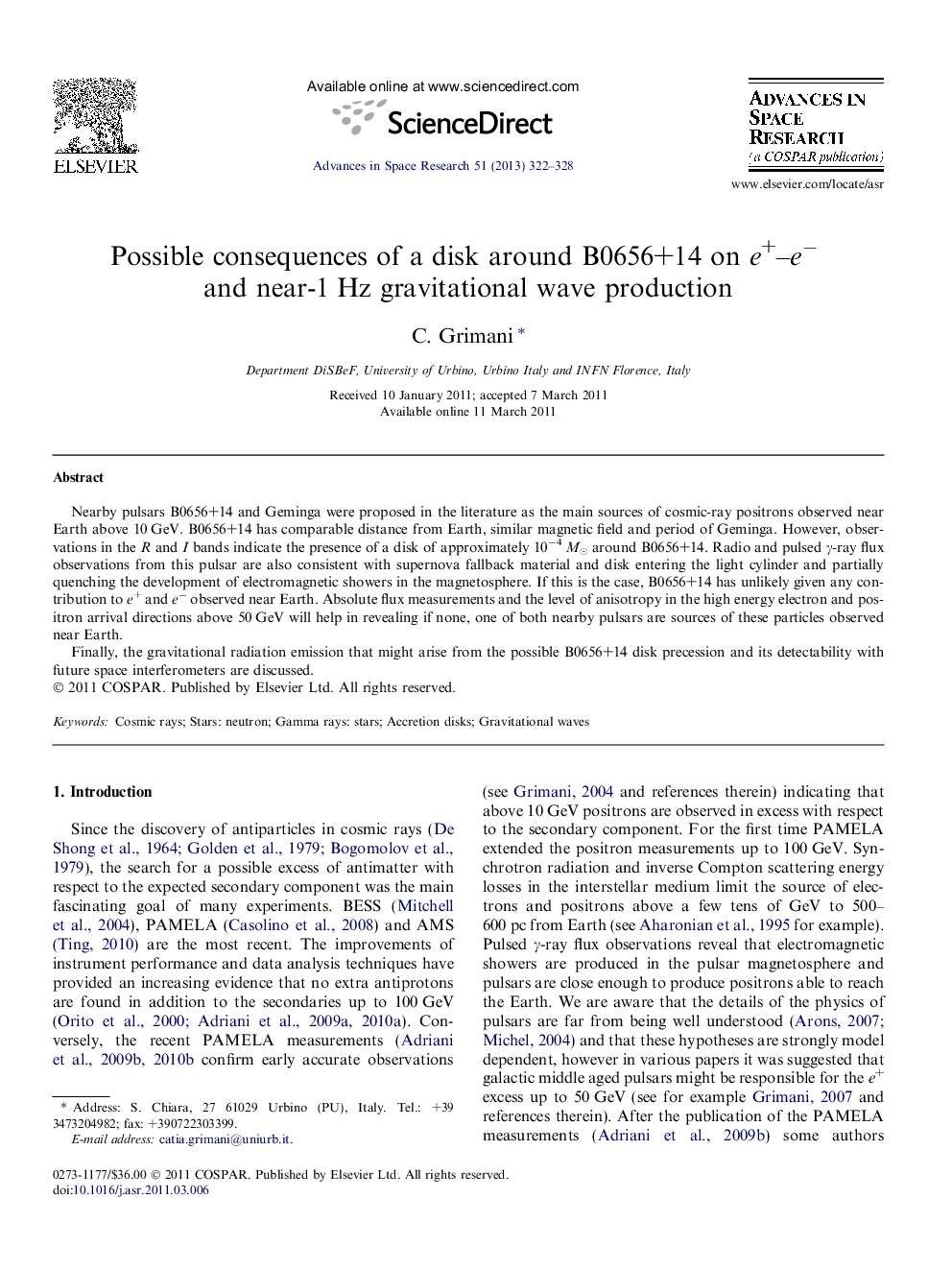| Article ID | Journal | Published Year | Pages | File Type |
|---|---|---|---|---|
| 1764566 | Advances in Space Research | 2013 | 7 Pages |
Nearby pulsars B0656+14 and Geminga were proposed in the literature as the main sources of cosmic-ray positrons observed near Earth above 10 GeV. B0656+14 has comparable distance from Earth, similar magnetic field and period of Geminga. However, observations in the R and I bands indicate the presence of a disk of approximately 10−4 M⊙ around B0656+14. Radio and pulsed γ-ray flux observations from this pulsar are also consistent with supernova fallback material and disk entering the light cylinder and partially quenching the development of electromagnetic showers in the magnetosphere. If this is the case, B0656+14 has unlikely given any contribution to e+ and e− observed near Earth. Absolute flux measurements and the level of anisotropy in the high energy electron and positron arrival directions above 50 GeV will help in revealing if none, one of both nearby pulsars are sources of these particles observed near Earth.Finally, the gravitational radiation emission that might arise from the possible B0656+14 disk precession and its detectability with future space interferometers are discussed.
